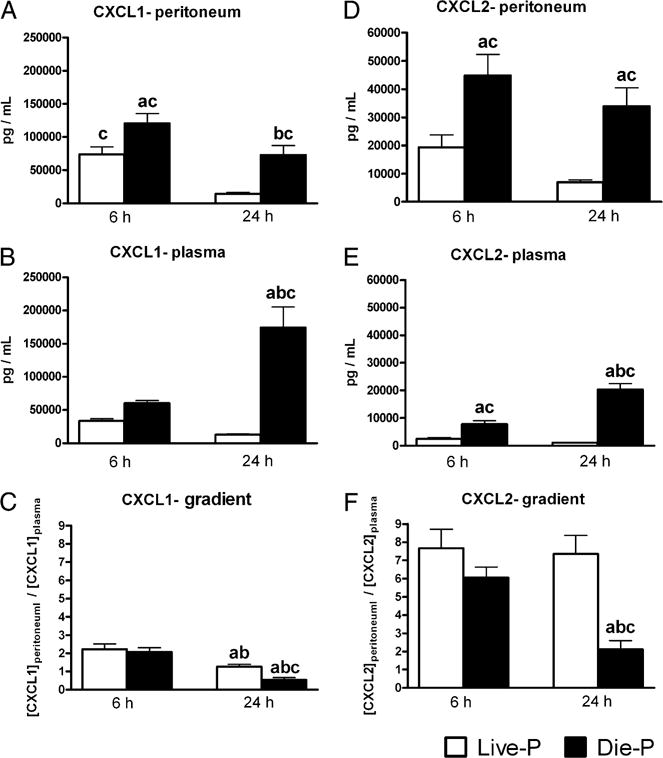FIGURE 1.

Mice predicted to die in the acute phase of CLP sepsis had higher peritoneal and plasma levels of CXCL1 and CXCL2 than did those predicted to survive. By 24 h post-CLP, mice predicted to die had significantly lower peritoneal to plasma concentration gradients of CXCL1 and CXCL2. CXCL1 was measured by ELISA, and CXCL2 was measured by microarray immunoassay. The peritoneal concentration was calculated as described in the Materials and Methods. The concentration gradient was expressed as the ratio between the concentration of the chemokine in the peritoneum and the concentration in plasma. For A, C, D, and F, at 6 h n = 9 for Live-P and 11 for Die-P, and at 24 h n = 24 for Live-P and 13 for Die-P. For B and E, at 6 h n = 9 for Live-P and 11 for Die-P, and at 24 h n = 29 for Live-P and 14 for Die-P. Results are shown as mean ± SEM. p < 0.05 when compared with Live-P at 6 h (a); Die-P at 6 h (b); Live-P at 24 h (c).
